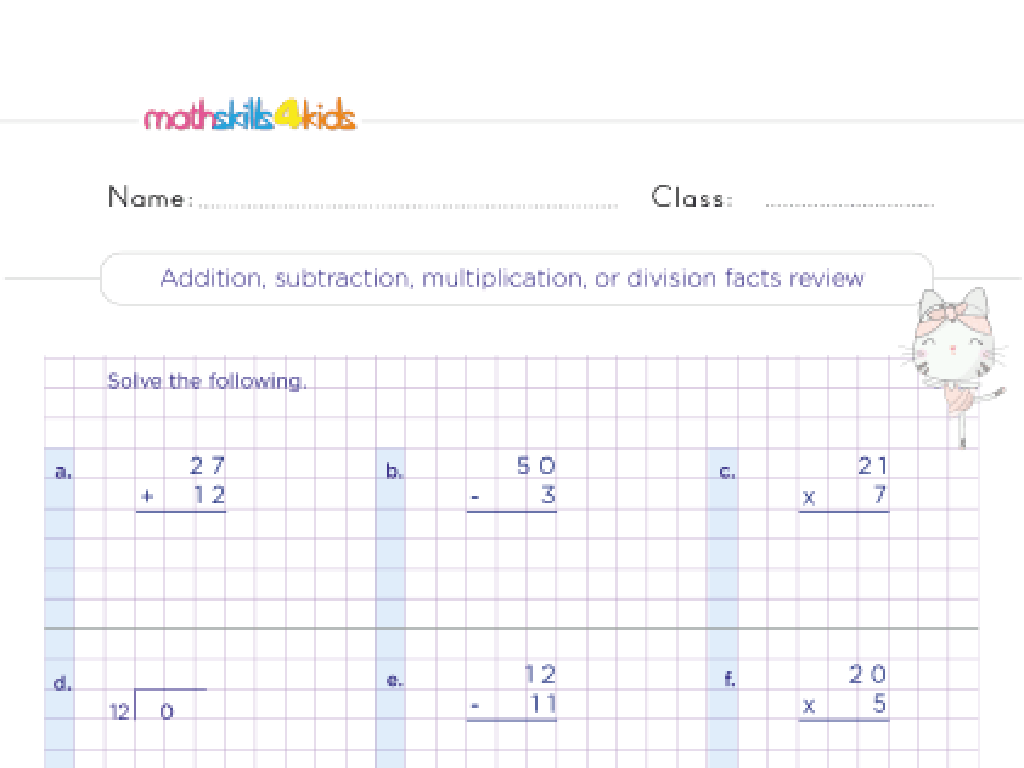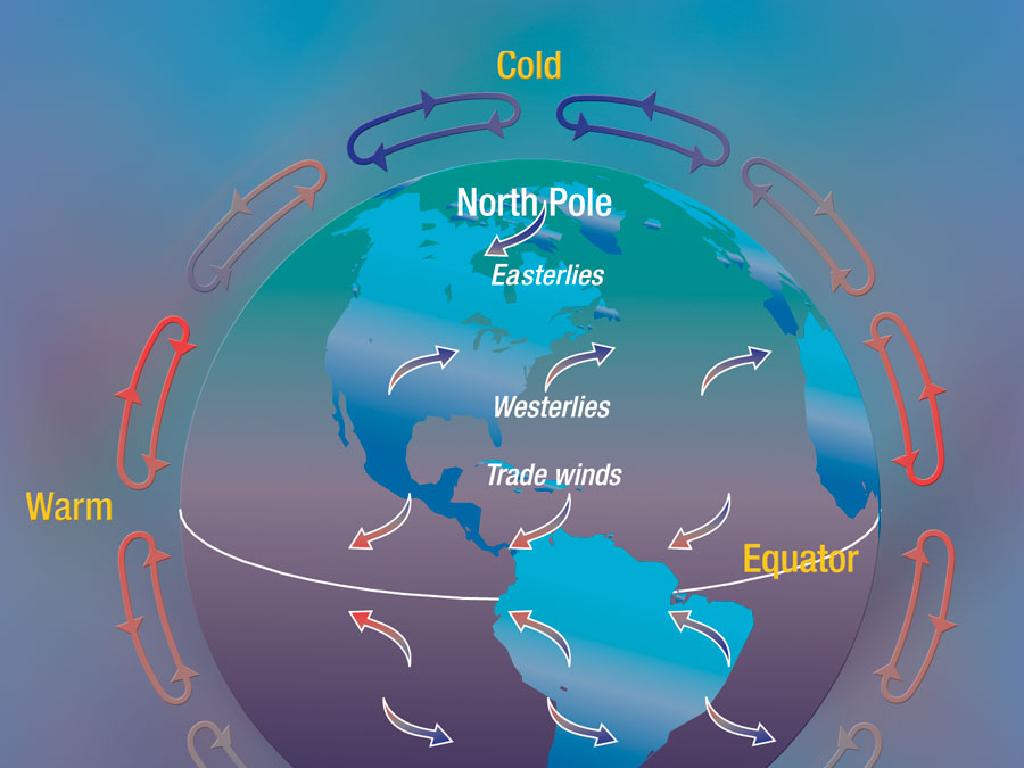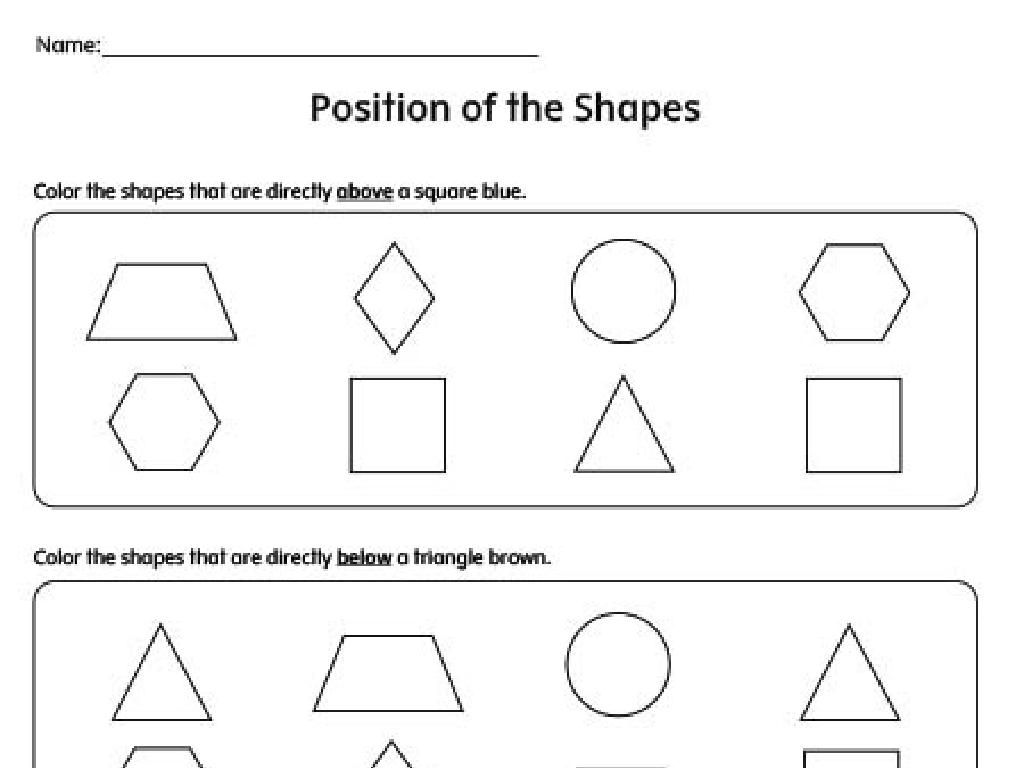Identify And Select Countries Of Africa: Region 5
Subject: Social studies
Grade: Eighth grade
Topic: Africa: Geography
Please LOG IN to download the presentation. Access is available to registered users only.
View More Content
Exploring Africa: Region 5
– Africa’s diverse geography
– Africa is not a monolith; it has varied landscapes and climates.
– Countries in Region 5
– Today’s focus: South Africa, Botswana, Lesotho, Namibia, Swaziland.
– Significance of regional study
– Studying regions helps appreciate cultural & environmental diversity.
– Engage with Region 5’s uniqueness
|
This slide introduces students to the diverse geography of Africa, emphasizing the continent’s variety in landscapes, climates, and cultures. Region 5 includes countries in the southern part of Africa, each with unique features and significance. Understanding these distinctions is crucial for a comprehensive grasp of Africa’s geography and its global impact. Encourage students to think about the importance of regional studies in understanding the complexities of a continent. Highlight how this knowledge can foster a deeper appreciation for the cultural and environmental diversity within Africa.
Mapping Out Africa: Region 5
– Locate Region 5 on Africa’s map
– List countries in Region 5
– Countries like Botswana, South Africa, Lesotho, and Swaziland
– Interactive map activity
– Students will pinpoint and label each country on a map
– Engage with African geography
|
This slide is aimed at helping students identify and familiarize themselves with Region 5 of Africa. Start by showing them where Region 5 is located on the continent’s map. Discuss the countries that are part of this region, highlighting Botswana, South Africa, Lesotho, and Swaziland. Move on to an interactive map activity where students will engage hands-on by locating and naming each country in Region 5. This activity not only reinforces their knowledge of African geography but also encourages active participation. Make sure to provide clear instructions for the interactive activity and be ready to assist any student who needs help. Consider using digital tools or a large physical map to make the activity more engaging.
Physical Features of Africa: Region 5
– Explore mountains, rivers, deserts
– Geography’s impact on culture
– How physical surroundings influence daily life, traditions, and occupations
– The Sahara Desert
– World’s largest hot desert, affects settlement patterns
– The Nile River
– Longest river, vital for agriculture and transportation
|
This slide aims to introduce students to the major physical features of Africa’s Region 5 and how these features shape the culture and lifestyle of the people living there. Emphasize the importance of the Sahara Desert and the Nile River in this region. The Sahara’s vast expanse influences where people can live and how they adapt to the environment, while the Nile River has been central to the survival of civilizations, providing water for agriculture and a means of transport. Discuss how geography can dictate the economic activities and cultural practices of a region. Encourage students to think about how their own environment affects their daily lives to draw parallels.
Cultural Highlights of Africa: Region 5
– Diversity in Region 5 cultures
– Home to a mosaic of ethnic groups, each with distinct customs.
– Languages and traditions
– Swahili, Amharic, and other indigenous languages are spoken; traditions vary widely.
– Celebrations across Region 5
– Festivals like Timkat in Ethiopia celebrate heritage and history.
– Unique cultural practices
– The Maasai’s jumping dance, Eunoto, is a rite of passage for warriors.
|
This slide aims to give students a glimpse into the rich cultural tapestry of Africa’s Region 5. Emphasize the diversity found within this region, including the various ethnic groups and their unique customs and traditions. Discuss the importance of language as a cultural identifier and introduce some of the common languages spoken. Highlight key celebrations that are significant to the people in this region, such as religious and cultural festivals. Provide examples of unique cultural practices, like the Maasai warrior’s jumping dance, to illustrate the distinctiveness of the region’s cultural heritage. Encourage students to explore these cultural aspects further and consider how they contribute to the region’s identity.
Economic Activities in Africa: Region 5
– Main economic activities overview
– Agriculture, mining, and tourism are key sectors.
– Natural resources and economy
– Resources like diamonds, gold, and oil drive growth.
– Diamond industry in Botswana
– Botswana’s economy heavily relies on diamond mining.
– Case study impact analysis
– Explore how diamonds have transformed Botswana’s economy.
|
This slide aims to provide students with an understanding of the various economic activities that are prevalent in Africa’s Region 5. Emphasize the diversity of economic sectors, including agriculture, which is widespread due to the region’s fertile lands; mining, which taps into the rich deposits of minerals; and tourism, which is bolstered by the region’s natural beauty and wildlife. Highlight the significance of natural resources, particularly in countries like Botswana, where the diamond industry has had a profound impact on the economy. Use the case study of Botswana to discuss how the discovery and exportation of diamonds have led to economic growth and development challenges. Encourage students to think critically about the benefits and potential drawbacks of a resource-dependent economy.
Challenges in Africa: Region 5
– Desertification impact
– Land degradation leading to less farming
– Water scarcity issues
– Limited access to clean water for daily use
– Poverty in the region
– High poverty rates affect quality of life
– Education barriers
– Lack of schools and educational resources
|
This slide addresses the significant challenges faced by the countries in Africa’s Region 5. Desertification is a critical environmental issue that leads to land degradation, making it difficult for the inhabitants to farm and sustain their livelihoods. Water scarcity compounds this problem by limiting access to clean water for drinking, sanitation, and agriculture. Socio-economic challenges such as poverty are widespread, affecting the quality of life and access to basic necessities. Education is also a major concern, with many areas lacking sufficient schools and resources, which hinders the development of the region and the future prospects of its youth. Discuss how these challenges intertwine and exacerbate each other, affecting the daily lives of people in Region 5. Encourage students to think critically about potential solutions and the role of international aid and policy in addressing these issues.
Region 5 Today: Current Events and Future Outlook
– Explore current events in Region 5
– Look at news articles, videos, and reports to learn what’s happening now.
– Understand Region 5’s future direction
– What initiatives are in place for economic, social, and environmental growth?
– Examine youth and tech in development
– How are young people contributing to progress, and what tools are they using?
– Discuss the impact of technology
– Consider how technology is changing communication, education, and business.
|
This slide aims to engage students with the contemporary dynamics of Region 5 in Africa. It’s crucial to highlight the importance of staying informed about current events and recognizing the region’s efforts towards shaping its future. Emphasize the pivotal role of the younger generation and the integration of technology in driving development. Encourage students to research and bring examples of how technology is being used innovatively in Region 5. Discuss the impact of such advancements on various aspects of life in the region. This will help students appreciate the complexities and the potential of Region 5 in the context of global development.
Class Activity: Discovering Region 5 of Africa
– Research a Region 5 country in groups
– Create an informative poster
– Highlight geography, language, customs, and landmarks
– Include maps and cultural facts
– Present your findings to the class
|
This class activity is designed to engage students with the geography and culture of Africa’s Region 5. Divide the class into small groups and assign each group a different country within Region 5. Provide resources such as atlases, library access, and internet for research. Students should create a poster that includes the country’s map, key geographical features, cultural facts, and other interesting information they find. Encourage creativity and thorough research. Each group will present their poster to the class, explaining their findings and what they learned about their selected country. This activity promotes teamwork, research skills, and public speaking. Possible countries for research include Angola, Namibia, South Africa, Botswana, Zimbabwe, Mozambique, Zambia, Malawi, Tanzania, Democratic Republic of the Congo, Burundi, Rwanda, and Madagascar.






